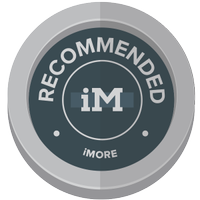iMore Verdict
Bottom line: The Keychron K8 Pro is a TKL mechanical keyboard with Bluetooth wireless connectivity and VIA/QMK support. It can connect with up to three devices, works with both Mac and Windows, is hot-swappable, and has a lot of thock for the price point.
Pros
- +
Wireless connectivity with up to three devices
- +
VIA/QMK support and works with both Mac and Windows
- +
Hot-swappable
- +
Sound-dampening modifications for extra thock
- +
Barebones or fully assembled versions with Gateron G Pro switches
Cons
- -
Not widely available until May 2022
- -
"Aluminum" frame makes keyboard look recessed
- -
VIA/QMK needs keyboard to be plugged in
You can always trust iMore.
Even though I'm a Mac user, I honestly can't stand the Apple Magic Keyboard, and pretty much any similar alternatives. I simply don't like the chiclet key feel, and they're too quiet — I like to hear my typing, thank you very much. This is why I can only use mechanical keyboards these days, and quite frankly, I'll never go back.
I got into mechanical keyboards a few years ago, with my first mechanical being the Keychron K2. At the time, for my first keyboard, it was a good start, but I've gone into the deep end with this hobby, personally. My current daily driver has been the Keychron Q1, which is one of the company's more "premium" offerings, though there are still many more high-end boards out in the niche market. But one thing I didn't like was the fact that there never seemed to be a wireless mechanical keyboard with VIA/QMK compatibility.
Enter the Keychron K8 Pro. This is part of Keychron's K-series of wireless keyboards, but it now has compatibility with reprogramming software VIA and QMK. When I saw that Keychron was launching this one, I had to give it a shot for myself.
Keychron K8 Pro: Price and availability

Right now, you can only find the Keychron K8 Pro direct from Keychron. The webpage will take you to the active Kickstarter campaign, which ends on April 15. Once the Kickstarter is over, you should find the K8 Pro available to purchase on the Keychron site, like its other keyboards. The Keychron K8 Pro only comes in a black body, which is made with plastic, though you can opt for an aluminum frame for a little more money. The barebones version of the K8 Pro starts at around $79, and a fully assembled RGB backlight aluminum hot-swap version can be around $100.
Keychron K8 Pro: Solid body, wireless, and reconfigurable
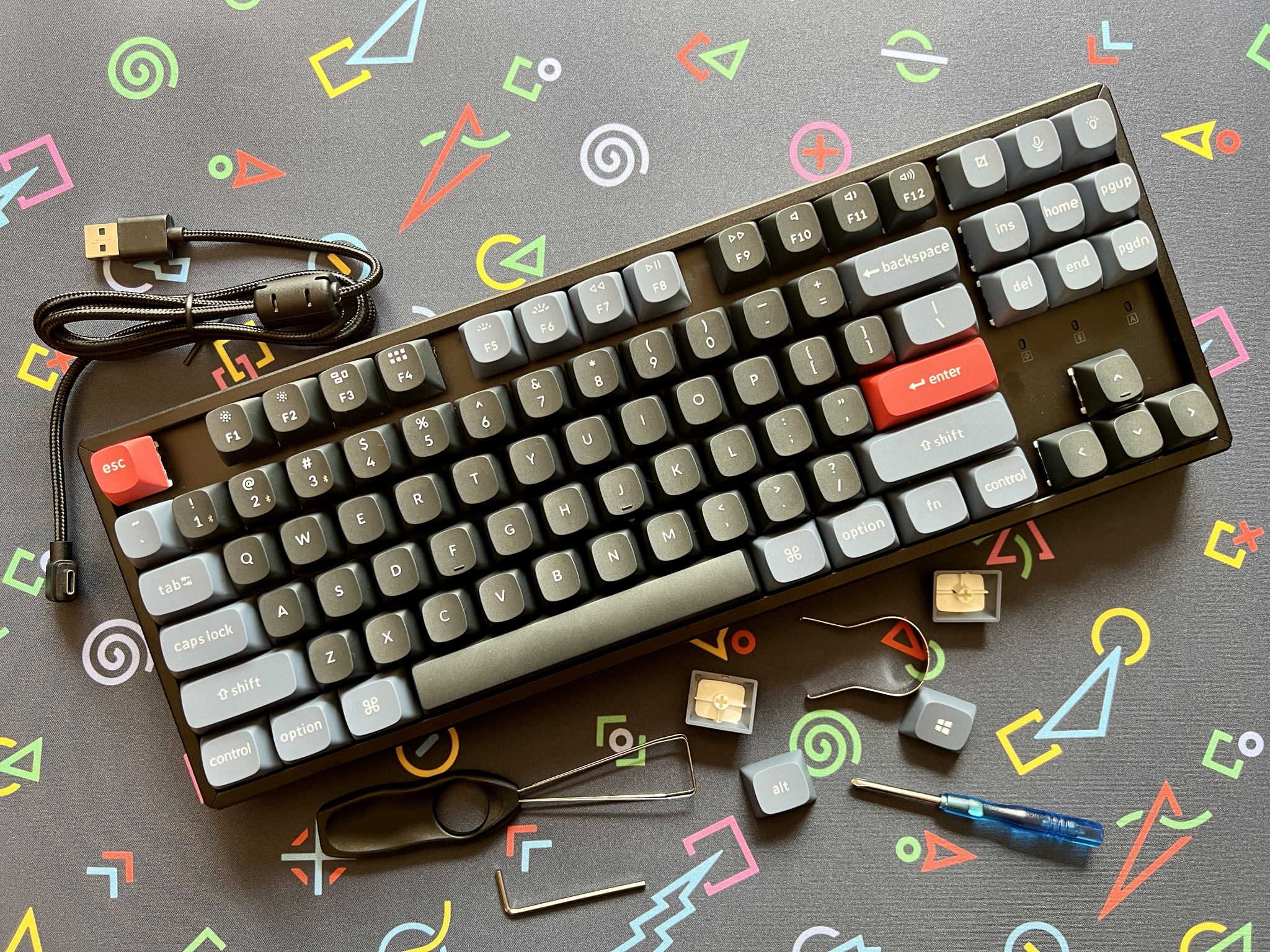
For one of its K-series boards, the K8 Pro is a solid choice. Since the K-series are wireless, they are meant to be a little more lightweight than premium mechanical keyboards on the market, and that's evident with the K8 Pro. The body itself is a plastic material, but you can go for the aluminum frame for a bit of added heft, which also gives the keyboard a bit more a "thock" sound. The bottom of the K8 Pro has rubberized feet to prevent it from sliding around your desk, and there are two plastic feet that kick out to provide you with two typing angles for comfortable typing.
This is a great upgrade over the original K8 that debuted in 2020.
If you're expecting a full metal body for a wireless keyboard, I don't think that's entirely possible, since the materials may interfere with the Bluetooth antennas. This is why the main body of the K8 Pro is plastic, with the aluminum just being a frame, though this particular one gives the entire board a bit of a "recessed" look. The overall weight of the K8 Pro is pretty light, but then again, I'm used to boards that weigh several pounds (maybe around five pounds).
For those who plan to customize every last bit of the K8 Pro, you'll want the barebones version, as you can use your own switches and keycaps. However, I was sent a fully assembled (RGB backlight aluminum) version, which I suspect is what most people who look at the K8 Pro will go for. The fully assembled versions let you choose from Gateron G Pro Mechanical Red, Blue, or Brown switches. Reds are the quiet linear switches, Browns are the tactile and gentle sound switches, and Blues are the loud clicky switches that will make your colleagues dislike you in quiet office environments and even during gaming sessions with friends if you communicate through voice chat.
This is the first wireless keyboard that you can reconfigure with VIA/QMK software.
My unit came with the Gateron G Pro Mechanical Red switches, which is not my personal preference. I tend to go for tactiles, but I was actually surprised with the reds. They don't require a lot of actuation force, so it's very responsive, and thanks to the sound dampening foam and silicone pads inside, it produces a fantastic "thock" sound. This is also partly thanks to the OSA profile double-shot PBT keycaps that Keychron includes, which is basically OEM profile with rounded corners. For those who need a comparison, it's somewhere between Cherry/OEM and KAT/SA keycap profiles. My day-to-day Keychron Q1 with Dark Magic Girl DSA profile keycaps is what I prefer, but I found typing on Keychron's OSA profile to be comfortable for a full day of work. This is, of course, subjective like everything else about mechanical keyboards.
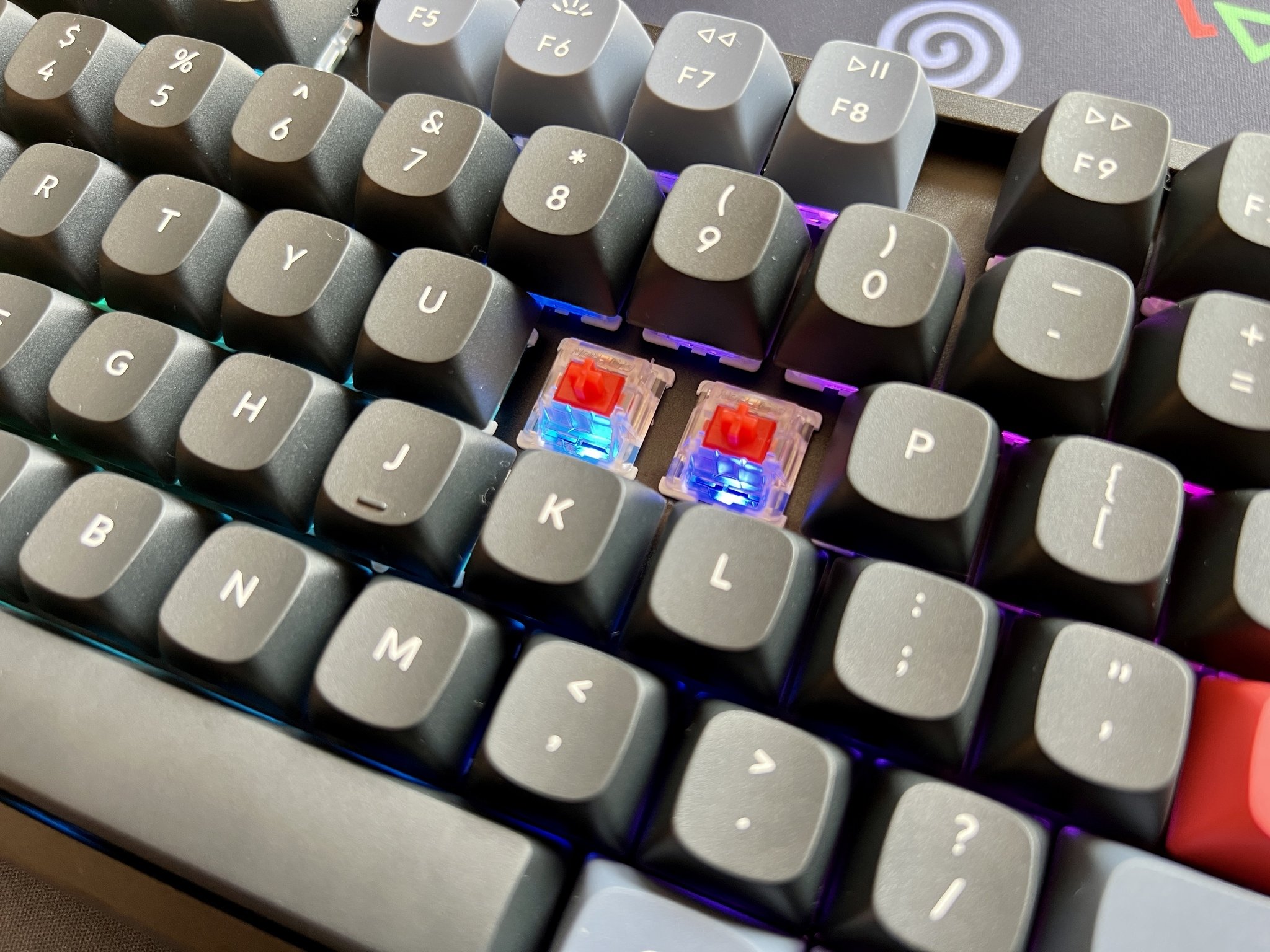
The Keychron K8 Pro is a tenkeyless (TKL) layout board, which means it pretty much has everything except the numpad. So if you need everything (number row, function key row, arrow keys, cursor control keys) but the ten key, then the K8 Pro is for you. I personally stick with 75% or TKL, though I can go as small as 65% if there are extras like rotary knobs, as I don't need to input numbers on a regular basis.
You can use the Keychron K8 Pro in both wired and wireless modes by switching the toggle on the side to whichever mode you need. And if you switch between Mac and Windows, there is a toggle for that too (along with some Windows-specific keycaps in the box to help avoid confusion). The USB-C port is a little bit recessed on the side, so it may or may not work with your existing USB-C cables, depending on how thick they are on the USB-C side. Thankfully, Keychron includes a braided L-shaped USB-C to USB-A cable that works perfectly, but make sure to be careful with it, as not every other cable will fit. Fortunately, I did not have an issue with the pink coiled cable that I've been using, which originally came with my NK65 Milkshake Edition.
The 4000mAh battery will last 300 hours with no backlight, or 100 hours with the backlight.
Since the K8 Pro is wireless, it has a 4000mAh rechargeable li-polymer battery like the other Keychron K-series keyboards. However, somehow the K8 Pro has longer battery life than its predecessor, the standard Keychron K8. With the K8 Pro, you'll get about 300 hours with no backlight instead of 240 hours, and 100 hours with backlight at the lowest brightness versus 68 hours. I'm not sure how that works considering they both have a 4000mAh battery, but if you want to go longer between charges, then definitely pick up the K8 Pro.
The biggest feature of the K8 Pro is the fact that it is the only wireless mechanical keyboard with VIA/QMK support, at least, that I know of. With VIA and QMK software, you can customize and remap keys to better suit your needs, including things like macros. However, the only negative is that this requires the keyboard to be plugged in with a cable, so you can't remap and reprogram the K8 Pro wirelessly. VIA is also great for troubleshooting your keyboard if there is something wrong and you need to confirm, such as dead keys.
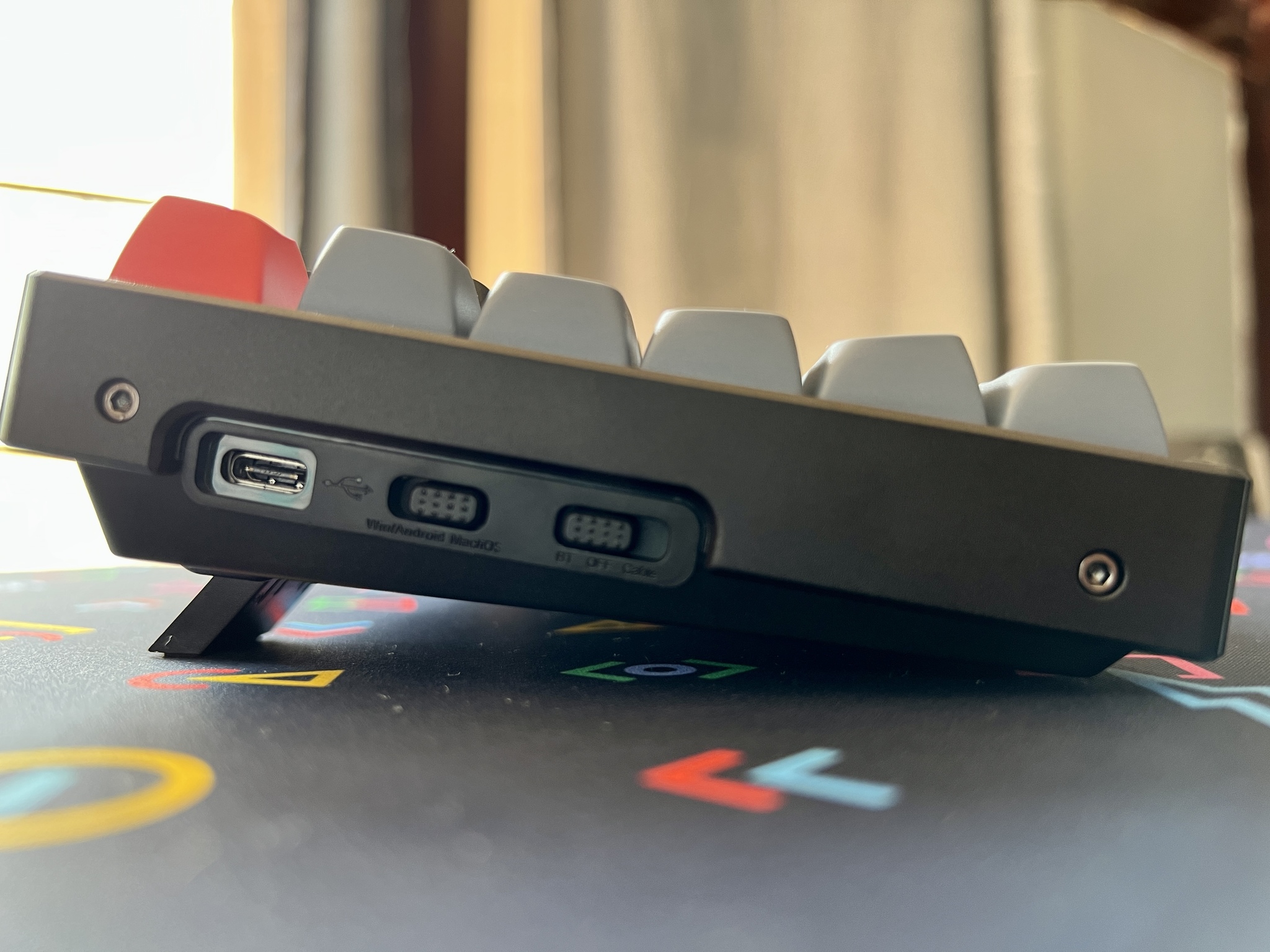
Those who also like RGB backlighting will love the K8 Pro. It comes with 19 backlight options, and you can even customize them in VIA if you so desire. While I originally loved RGB, I've grown accustomed to boards without them since most of my keycap sets aren't shine through. The keycaps that come with a fully assembled K8 Pro are not shine through, so unless you have some pudding caps or something, the south-facing RGB on the K8 Pro is not a huge deal. Plus, you can simply turn the lights off with the light key.
Like other Keychron keyboards, everything you need for the K8 Pro comes in the box. This includes keycap and switch pullers, a hex tool and mini screwdriver, USB-C cable, and extra keycaps for Windows.
Keychron K8 Pro: Must be plugged in to use VIA/QMK
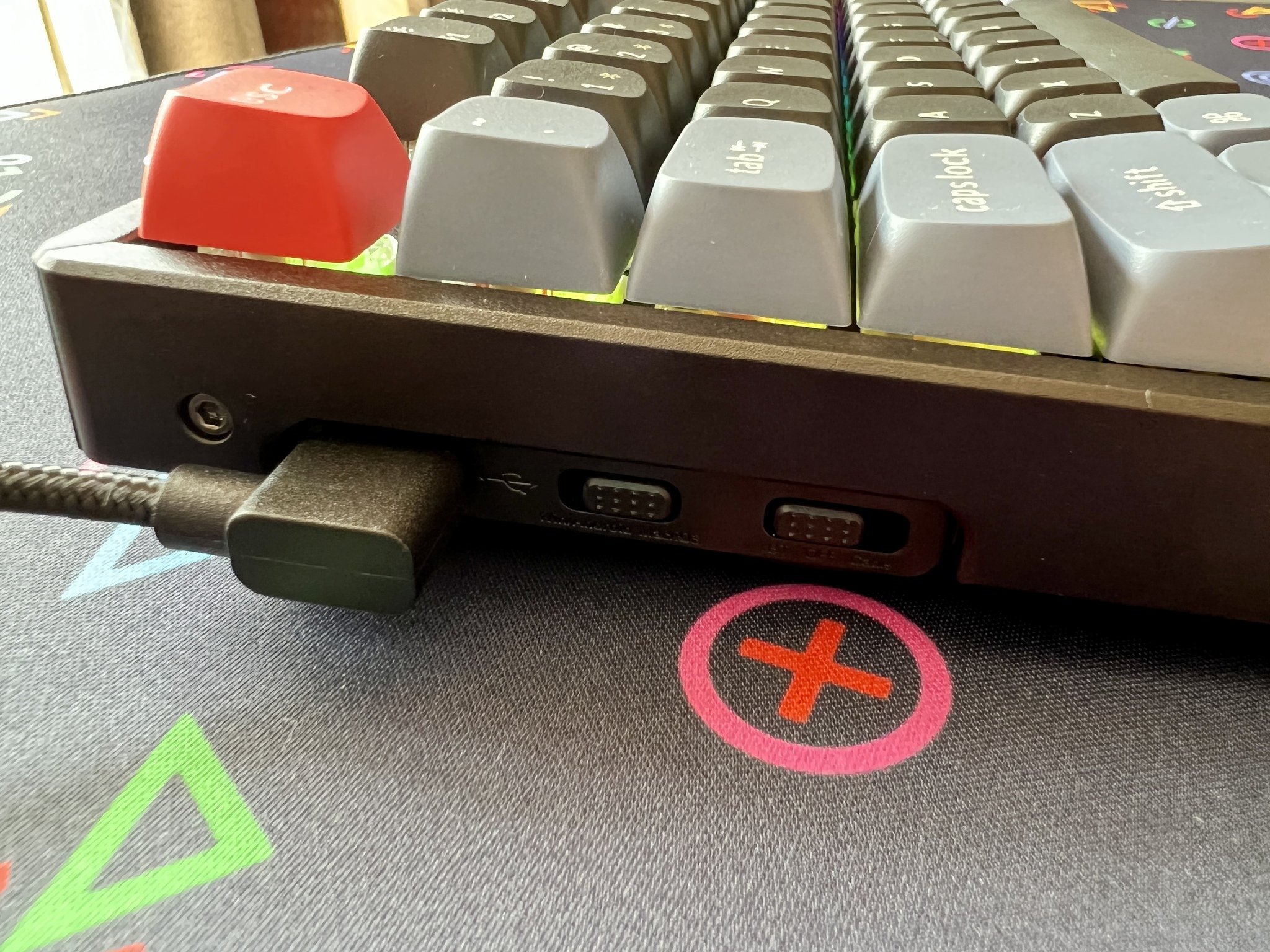
I think my biggest letdown with the K8 Pro is the fact that you need to plug it in to reconfigure with VIA/QMK software. I was hoping that it would work wirelessly, but I suppose that makes sense from a technical perspective. Still, being one of the only wireless mechanical keyboards out there with this capability is impressive.
You can only reconfigure the K8 Pro when it's plugged in.
Perhaps I'm too used to the Q-series of keyboards now, but the lack of color options when it comes to the K8 Pro is also apparent. It only comes in black, and while it's suitable for pretty much every desk setup, I do wish that there was some color variety. Black is boring.
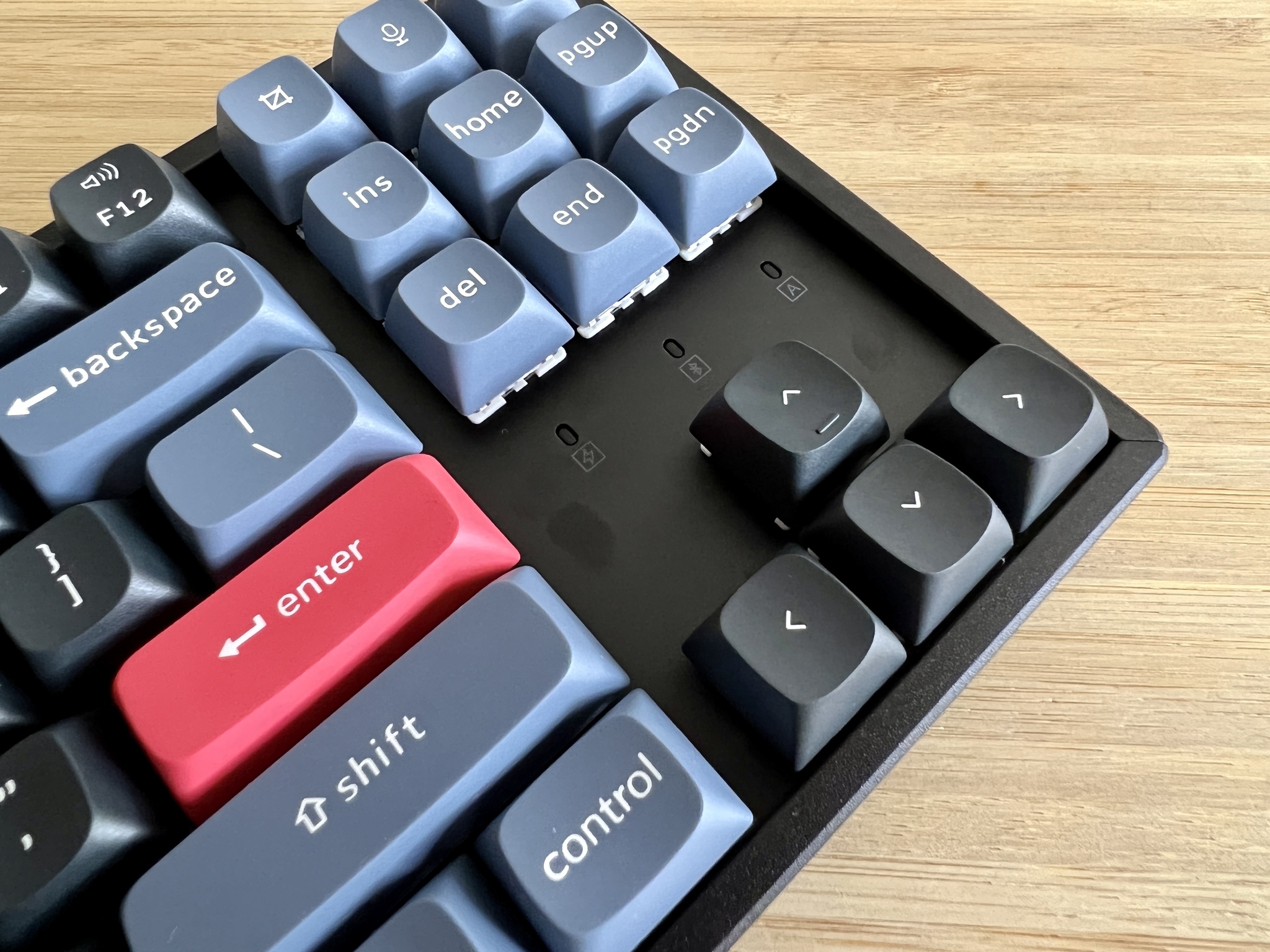
I'm also not a big fan of how the aluminum frame looks on the K8 Pro. The frame itself is a little taller than the actual body, so it creates a recessed look, which is more obvious on the right side. I prefer my keyboards to look flush, like a single piece of metal, so I'm just not a big fan of this aesthetic. Of course, this is also how the original Keychron K8 looks, so maybe I'm just making a big deal out of nothing. But the aluminum frame just sticks out like a sore thumb for me, but your preference may vary here.
The aluminum frame gives the entire keyboard a recessed look.
Lastly, it looks like the K8 Pro won't be available to the masses until sometime in May. So even if you back it on Kickstarter in the next few days or place a pre-order on Keychron's site, you won't see it for a few more weeks. Such is the life of the mechanical keyboard hobby in general though, but still worth noting.
Keychron K8 Pro: Competition
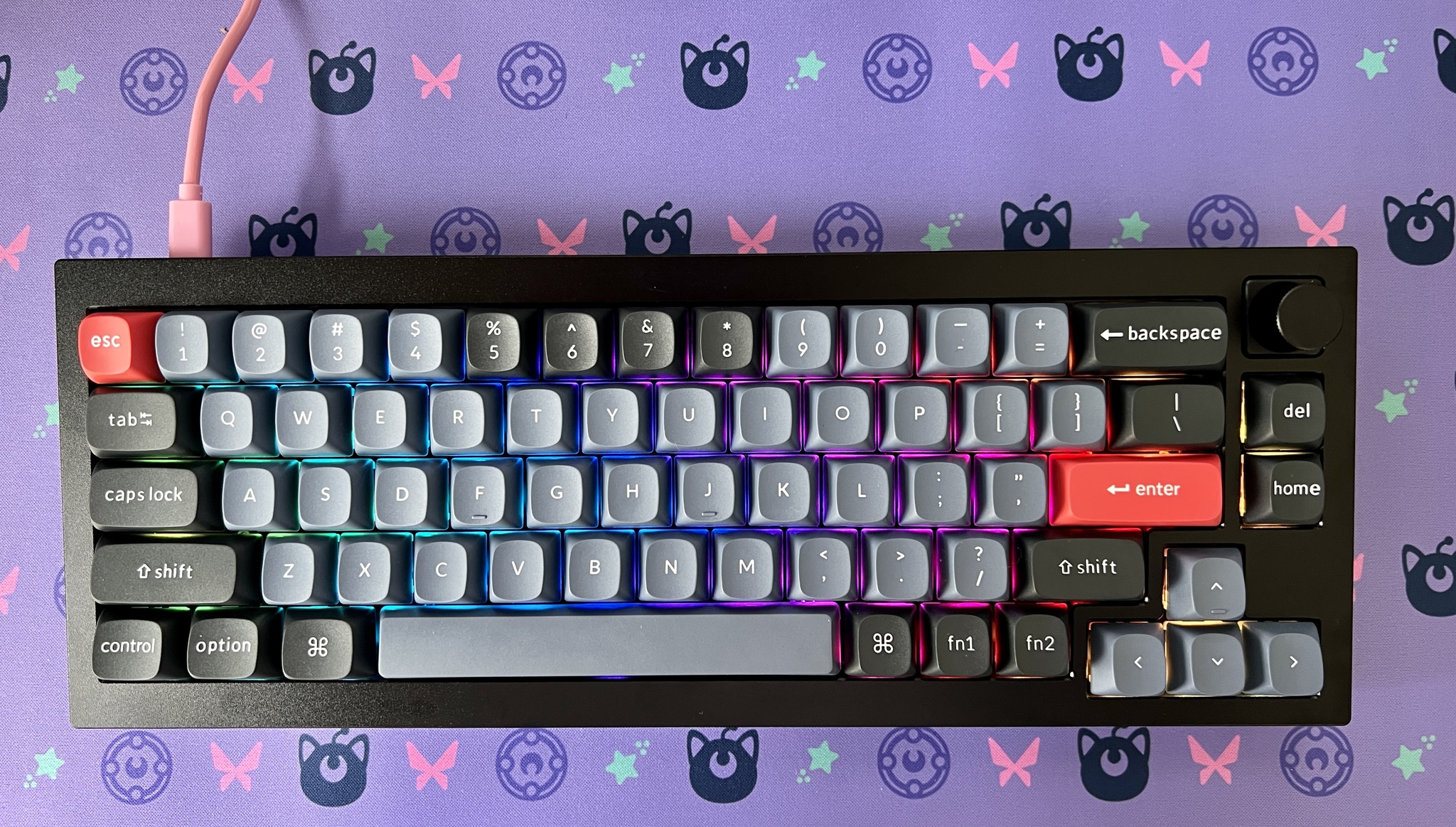
When it comes to the best mechanical keyboards, there is no shortage of TKL layouts. However, it's harder to find one that is also wireless with VIA compatibility. If you don't mind a wired option that is relatively affordable, I'd recommend taking a look at the Glorious GMMK. I reviewed this keyboard and liked it a lot; it comes in barebones or fully assembled options, is hot-swappable, and has a pretty sleek look for any setup. Plus, the USB-C cable is in a better placement at the top center of the board itself, rather than off to the side, which would be better for coiled aviator cables (purely aesthetics). However, it doesn't use VIA for remapping, and the software isn't available on Mac. But it's still a good plug-and-play keyboard.
I also reviewed two other Keychron keyboards that could be competitors. My personal favorite at the moment is the Keychron Q1 but even the Q2 would be great, depending on what you need (a 75% or a 65% layout). Though these are not wireless, they are Keychron's premium offerings with solid aluminum bodies, hot-swappable, VIA/QMK compatible, have versions with rotary knobs, and come in multiple colors. They are a little pricier though, but that's because they're of higher quality. Honestly, they're worth it, but only if you can live without the wireless connectivity (they're not travel boards).
Keychron K8 Pro: Should you buy it?
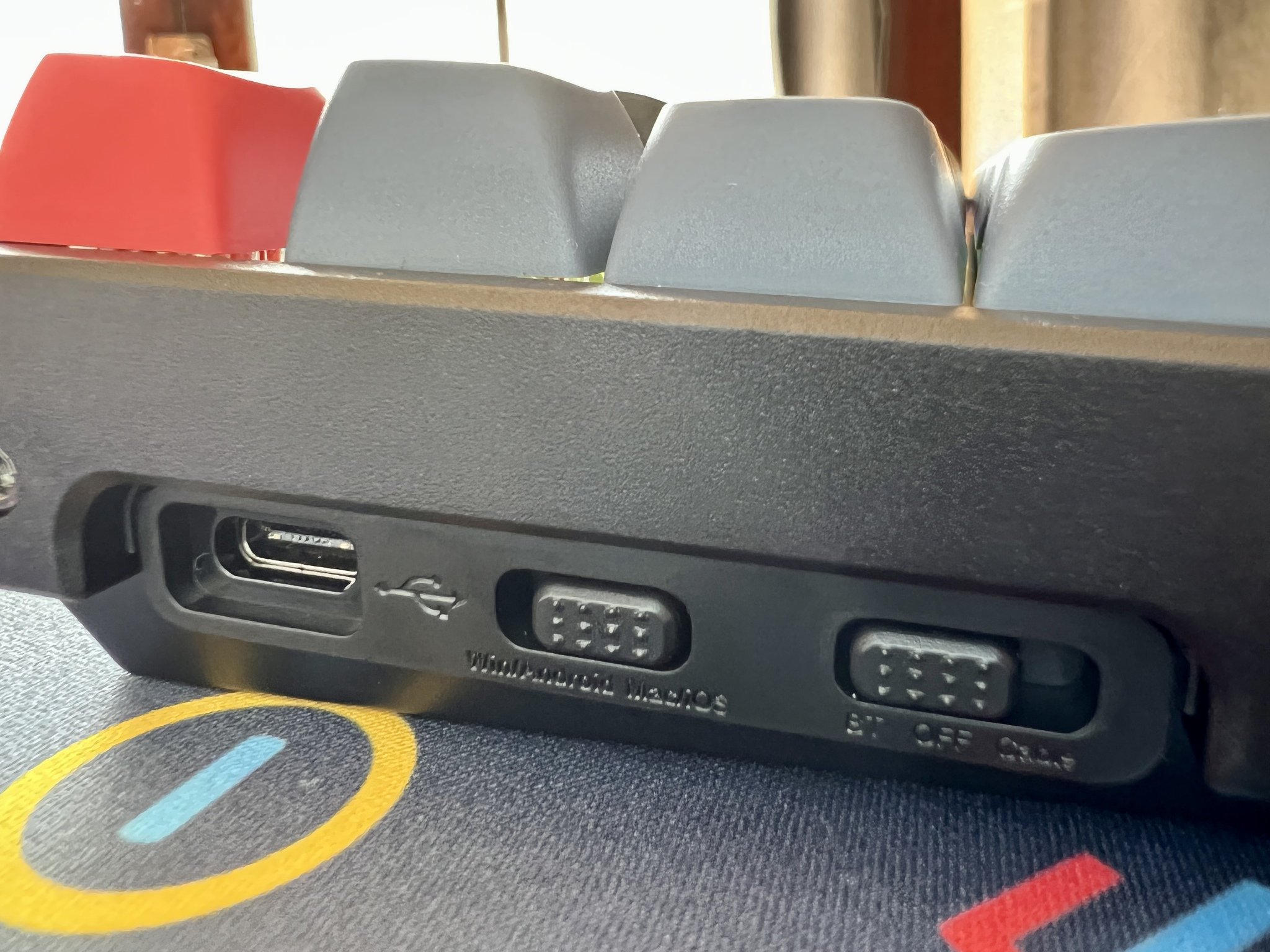
You should buy this if ...
- You need a wireless mechanical keyboard
- You don't need a numpad
- You want all the customization options
You shouldn't buy this if...
- You rely on a numpad
- You don't need a wireless mechanical keyboard
- You want a solid aluminum body
The Keychron K8 Pro is a great TKL wireless mechanical keyboard. It has a solid build for being plastic with an optional aluminum frame, can connect with up to three devices through Bluetooth, and can last for weeks on a single charge. All of this makes it a great mechanical keyboard to travel with, as long as you can fit it in your bag (it's not the most compact size). Plus, it's hot-swappable, so you can always change out the switches if desired, and it is even compatible with VIA/QMK — the first wireless keyboard to be able to do so.
But if you are reliant on a ten-key for daily work, then the K8 Pro is not for you. Since it's TKL, it lacks the numpad, and if you're doing a lot of data entry, then doing so with the number row may not be your style. Unfortunately, the K8 Pro is currently the only wireless keyboard that Keychron offers with VIA/QMK compatibility, but if you don't need that, then you can check out its large variety of other K-series wireless boards to fit your needs. The biggest draw of the K8 Pro is the fact that it is wireless with VIA support, but if you don't need the wireless component, then you'd be better off with the Q-series, though that is limited to a 75% and 65% layout at the moment.
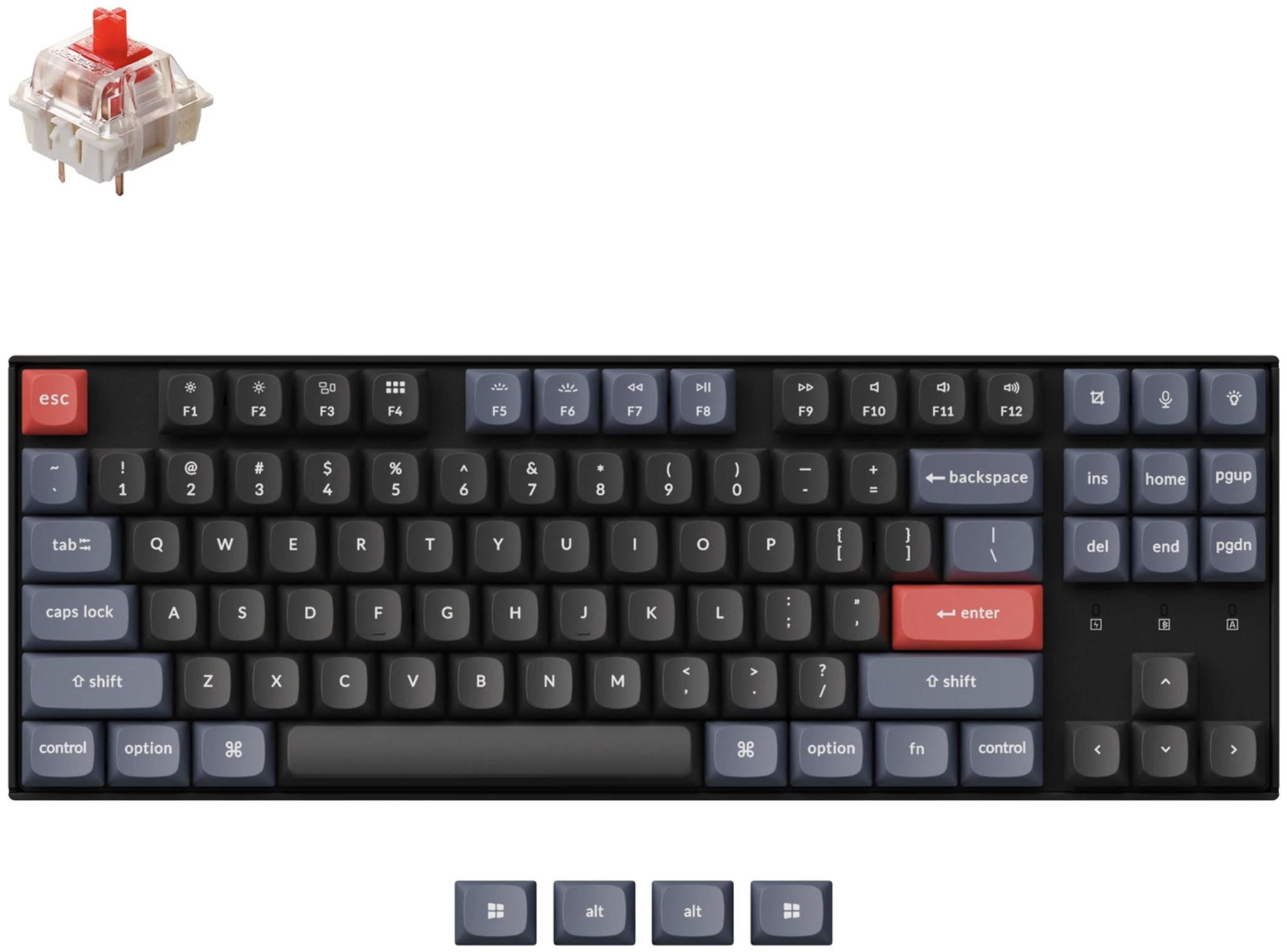
Bottom line: The K8 Pro is a wireless TKL mechanical keyboard with VIA/QMK compatibility. It has a solid body, is hot-swappable, sounds great, and comes with everything you need.
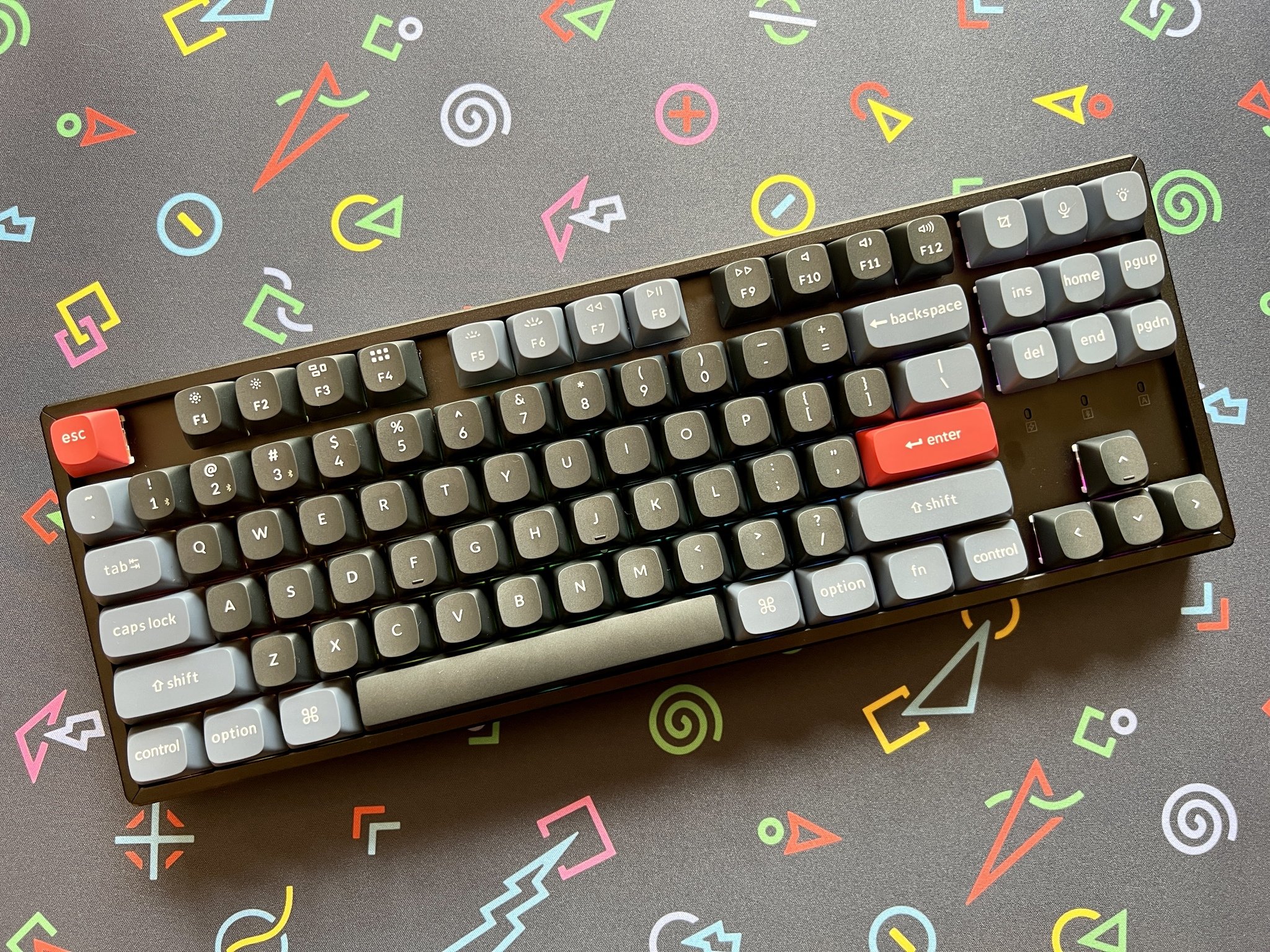

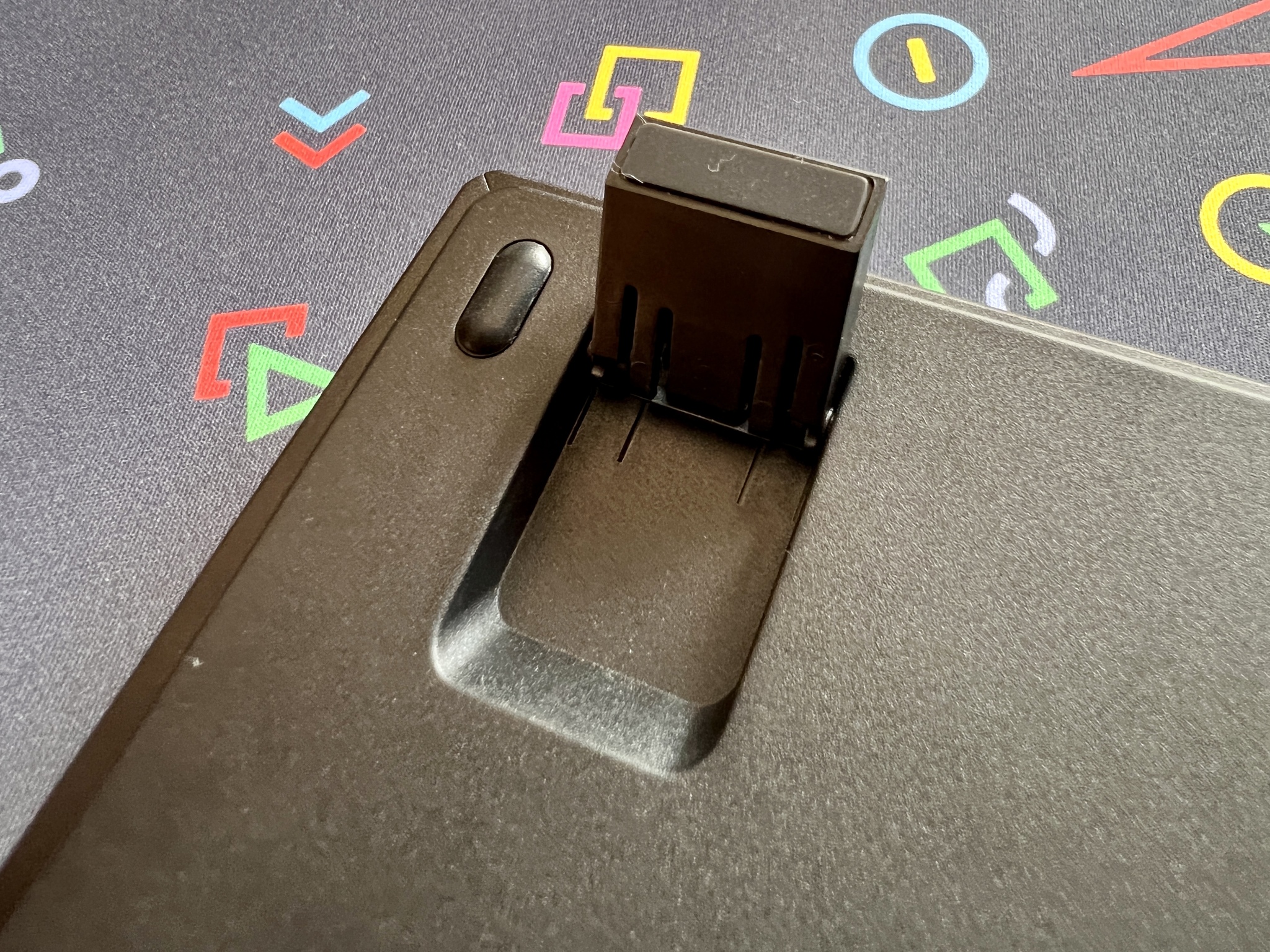
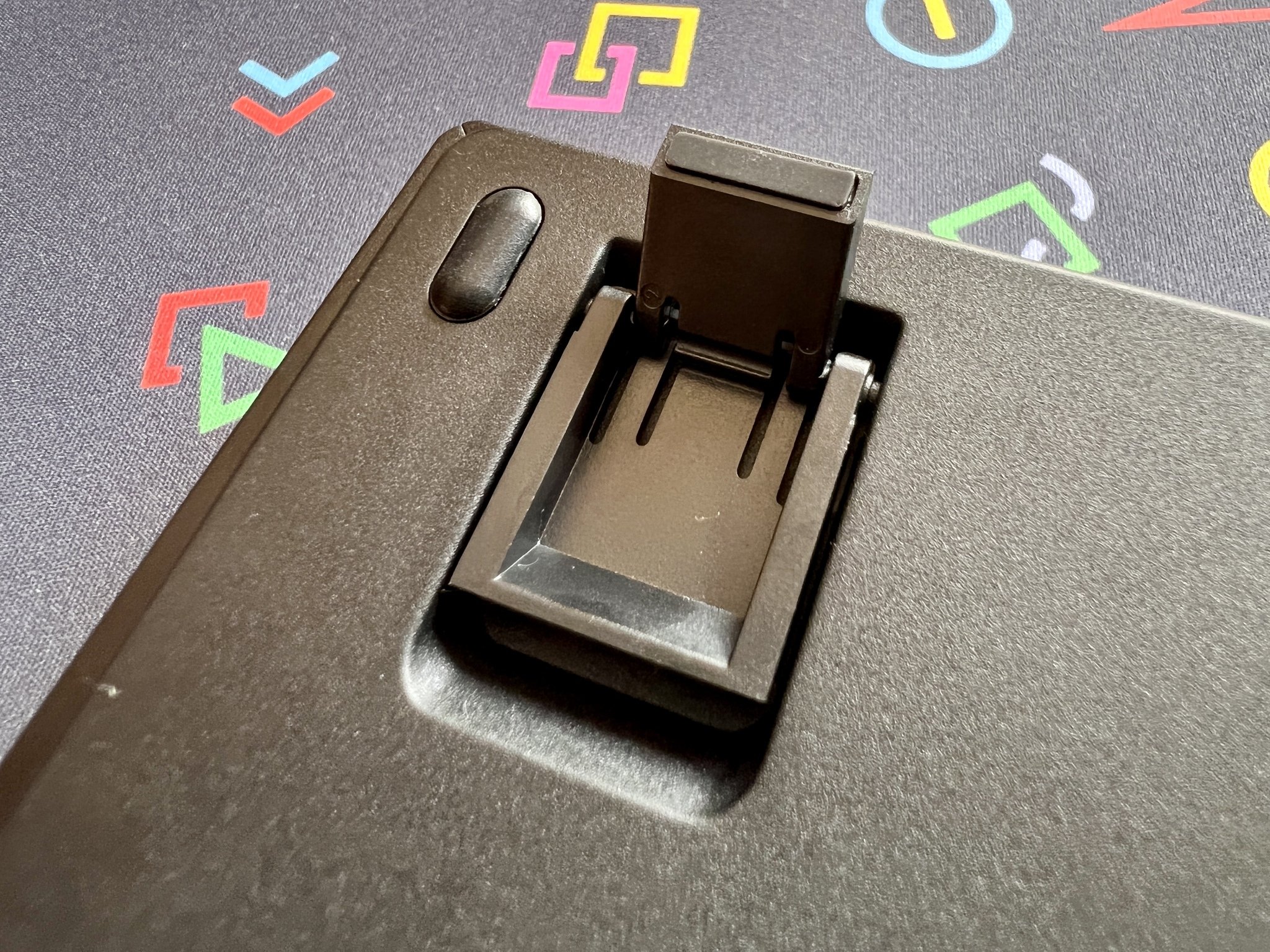
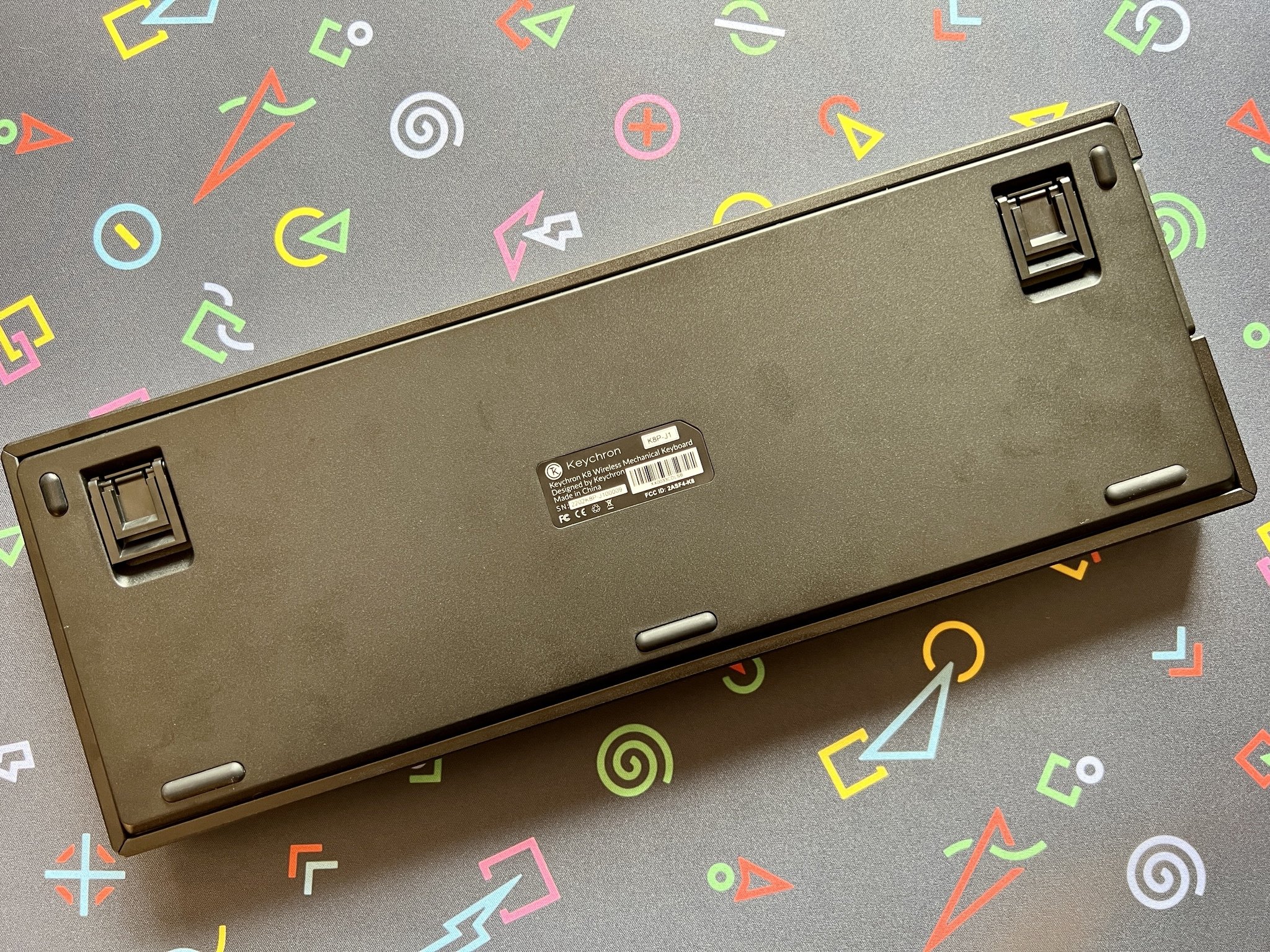


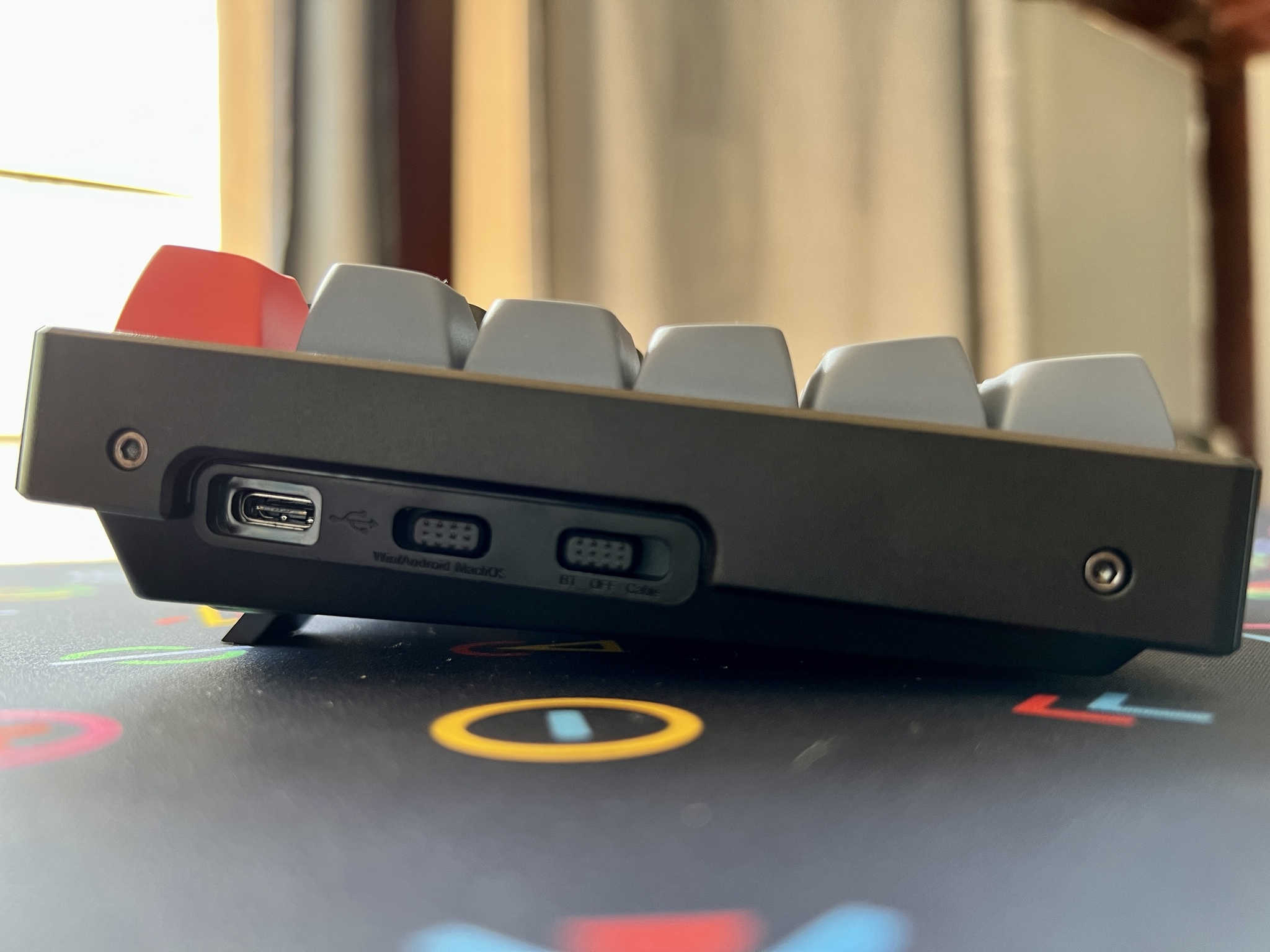




Christine Romero-Chan was formerly a Senior Editor for iMore. She has been writing about technology, specifically Apple, for over a decade at a variety of websites. She is currently part of the Digital Trends team, and has been using Apple’s smartphone since the original iPhone back in 2007. While her main speciality is the iPhone, she also covers Apple Watch, iPad, and Mac when needed. When she isn’t writing about Apple, Christine can often be found at Disneyland in Anaheim, California, as she is a passholder and obsessed with all things Disney, especially Star Wars. Christine also enjoys coffee, food, photography, mechanical keyboards, and spending as much time with her new daughter as possible.
